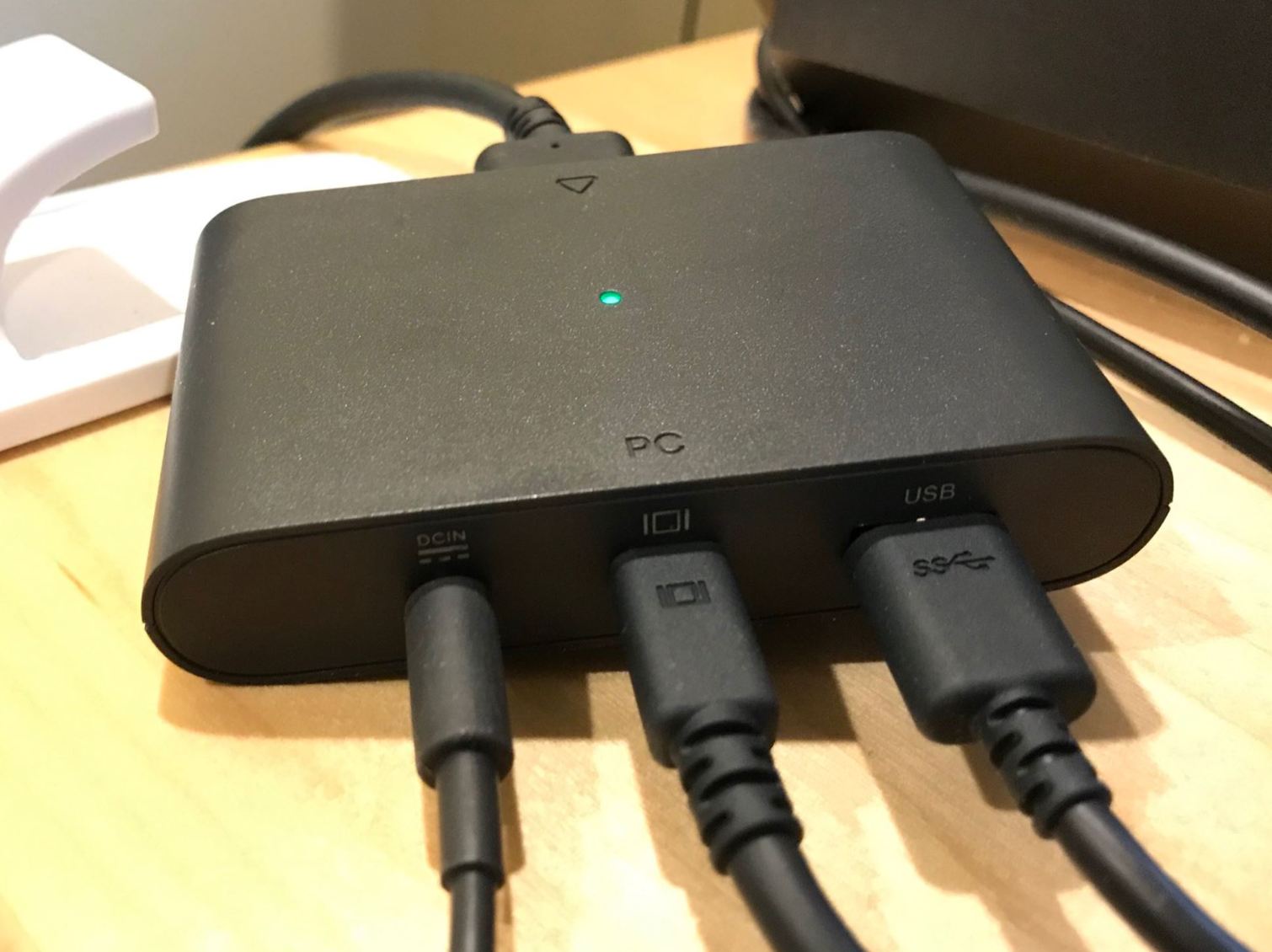The Vive Pro's New Link Box Adds A Power Button, Ditches HDMI
HTC is gearing up for the imminent release of the Vive Pro. The company is now seeding developers with new hardware, and some have taken to Twitter to share their excitement. In doing so, we’ve learned more about the upcoming headset upgrade.
Cloudgate Studio co-founder Steve Bowler excitedly tweeted some images of his shiny new Vive Pro headset yesterday that reveal new details about the Vive Pro that we weren’t yet aware of. We already know that the upcoming Vive HMD features higher resolution displays, dual front-facing cameras, upgraded headphones, and a refined head strap. We didn’t know that HTC completely redesigned the Vive Link Box.
The Vive Link Box is an intermediary device between the Vive headset and your PC. It enables HTC to feed additional power into the headset, and it’s where HTC houses the Vive’s Bluetooth controllers. The original Link Box design features a USB Type-A port, HDMI port, and AC power port to plug the HMD into. The other side features a USB Type-B so you can connect it to your PC and a power port for an AC adapter. It also includes an HDMI port and a Mini DisplayPort for use in case you don’t have a free HDMI port.
Bowler’s images reveal that HTC heavily revised the Link Box for the Vive Pro. The new design should be somewhat more foolproof that the older model. HTC marked the ports of the original Link Box to indicate which side you should plug the HMD into, but the ports on both sides match, so it isn’t hard to get it wrong if you aren’t paying attention. The new Link Box has completely different port configurations on each side, which should be impossible to mix up.
HTC also designed a new port for the tether cable that combines the USB, video, and power into one connection. As a result, the HMD side of the Link Box now features a single port instead of three. HTC used the free space afforded by the single cable to install a power button, so you can power the HMD down without unplugging it. There’s also an LED light on the top to let you know when it's powered on.
HTC reworked the backside of the Link Box, too. The new model no longer offers an HDMI port. DisplayPort is now the only video signal option. The change isn’t due to bandwidth—we know that HDMI 1.4 can drive 2880x1600 pixels because the Samsung Odyssey features the same resolution. However, we’re not surprised that HTC made this change. Graphics cards generally offer single HDMI ports and three DisplayPort interfaces. We always thought it was silly to use HDMI for VR HMDs, and it’s nice to see HTC moving away from that trend.
Coming Soon
HTC has yet to reveal the shipping date and price for the Vive Pro, but when the company revealed the Vive Pro headset at CES, it announced that the device would be on sale before the end of Q1—a deadline that is fast approaching. We anticipate hearing more about the new high-resolution Vive in the coming weeks.
Get Tom's Hardware's best news and in-depth reviews, straight to your inbox.
Kevin Carbotte is a contributing writer for Tom's Hardware who primarily covers VR and AR hardware. He has been writing for us for more than four years.
-
xrodney Single HDMI really?Reply
My 1080ti actually have 3 HDMI, 3DP, and DVI.
And If we talk about cheaper cards then most common is to have one port of each with DP already used for main display. -
Specter0420 Why are they even releasing this garbage? It is hard to even call it Gen 1.5, you can barely tell the difference between it and the Vive 1/Rift! It is the same resolution as the Samsung Odyssey, which I have tried, and I liked the Rift more. I guess Pimax is going to have the first Gen 2 headset.Reply -
KD_Gaming Specter your dumb, the vive pro and pimax 8k have the same ppi... the clarity will be identical, with pimax only having more fov. Not to mention pimax has also been having a lot of issues with its headsetReply


